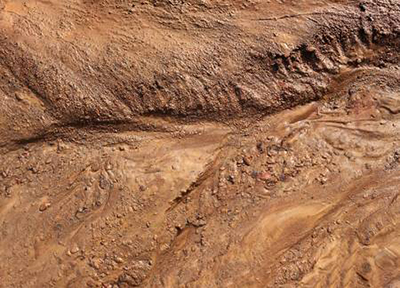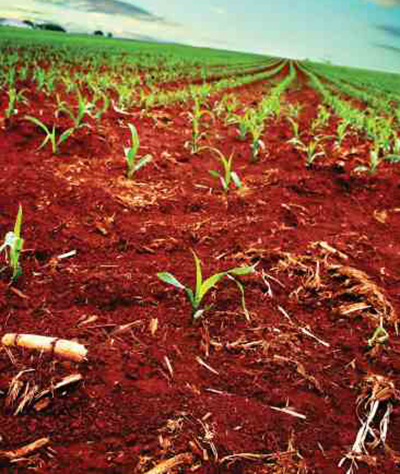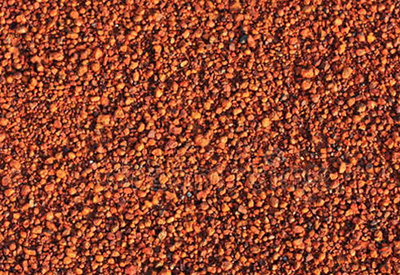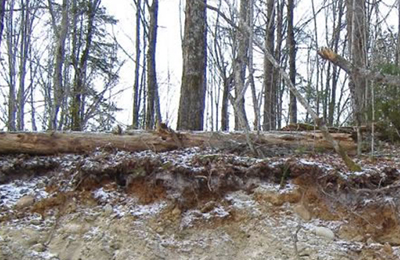
TOPICS COVERED IN THIS BOOK
- INTRODUCTION TO IRRIGATION
- INTRODUCTION TO WATER RESOURCES ENGINEERING
- WATER RESOURCES INFORMATION IN INDIA
- IMPACT OF IRRIGATION AND WATER RESOURCES IN INDIA
- IRRIGATION SCHEMES IN INDIA
- IRRIGATION DEVELOPMENT IN INDIA
- COMMAND AREA DEVELOPMENT
- PLANNING OF IRRIGATION PROJECTS
- CROPS AND CROP SEASONS IN INDIA
- INTRODUCTION TO HYDROLOGY
- HYDROLOGY AND HYDROLOGIC CYCLE
- PRECIPITATION, RUNOFF, STREAM FLOW, FLOODS
- HYDROGRAPHS
- SOIL WATER RELATIONS AND IRRIGATION METHODS
- SOILS – PHYSICAL AND CHEMICAL PROPERTIES OF SOILS
- SOIL WATER RELATIONSHIPS
- ROOT ZONE SOIL WATER
- INFILTRATION, EVAPOTRANSPIRATION
- METHODS, FREQUENCY, REQUIREMENTS OF IRRIGATION
- QUALITY OF IRRIGATION WATER
- GROUNDWATER AND WELLS
- RESOURCES OF GROUND WATER
- WELL IRRIGATION
- GROUNDWATER OCCURRENCES
- FLOW OF WATER THROUGH POROUS MEDIA
- WELL HYDRAULICS
- GROUND WATER EXPLORATION
- PUMPING TESTS
- DESIGN OF WATER WELLS
- METHODS OF WELL CONSTRUCTION
- WELL COMPLETION
- DEVELOPMENT OF WELLS
- PUMPING EQUIPMENT FOR WATER WELLS
- CANAL IRRIGATION
- CANALS, COMMAND AREAS
- PLANNING OF AN IRRIGATION CANAL SYSTEM
- ALIGNMENT OF IRRIGATION CANALS
- CURVES IN CANALS
- DUTY OF WATER
- CANAL LOSSES
- ESTIMATION OF DESIGN DISCHARGE OF A CANAL
- FLOW MEASUREMENT
- ASSESSMENT OF CHARGES OF IRRIGATION WATER
- WATERLOGGING
- DRAINAGE OF IRRIGATED LANDS
- MANAGEMENT OF CANAL IRRIGATION IN INDIA
- NEEDS, OBJECTIVES, INADEQUACIES OF GOOD CANAL IRRIGATION MANAGEMENT
- HYDRAULICS OF ALLUVIAL CHANNELS
- INCIPIENT MOTION OF SEDIMENT
- REGIMES OF FLOW
- RESISTANCE TO FLOW IN ALLUVIAL CHANNELS
- TRANSPORT OF SEDIMENT
- DESIGN OF STABLE CHANNELS
- SURFACE AND SUBSURFACE FLOW CONSIDERATIONS FOR DESIGN OF CANAL STRUCTURES
- CANAL REGULATION STRUCTURES
- CANAL FALLS, NOTCH FALL, SARDA FALL, GLACIS FALL
- REGULATORS, OFFTAKING CHANNEL
- CROSS DRAINAGE STRUCTURES
- RIVERS AND RIVER TRAINING METHODS
- CANAL HEADWORKS
- PLANNING OF WATER RESOURCE PROJECTS
- EMBANKMENT DAMS
- GRAVITY DAMS
- SPILLWAYS
SOILS
Soil mainly consists of finely divided organic matter and minerals (formed due to disintegration of rocks). It holds the plants upright, stores water for plant use, supplies nutrients to the plants and helps in aeration. Soils can be classified in many ways, such as on the basis of size (gravel, sand, silt, clay, etc.), geological process of formation, and so on. Based on their process of formation (or origin), they can be classified into the following categories:
– Residual soils: Disintegration of natural rocks due to the action of air, moisture, frost, and vegetation results in residual soils.
– Alluvial soils: Sediment material deposited in bodies of water, deltas, and along the banks of the overflowing streams forms alluvial soils.
– Aeolian soils: These soils are deposited by wind action.
– Glacial soils: These soils are the products of glacial erosion.
– Colluvial soils: These are formed by deposition at foothills due to rain wash.
– Volcanic soil: These are formed due to volcanic eruptions and are commonly called as volcanic wash
IRRIGATION ENGINEERING IES MASTER GATE STUDY MATERIAL : CLICK HERE
The soils commonly found in India can be classified as follows
(i) Alluvial Soils: Alluvial soils include the deltaic alluvium, calcareous alluvial soils, coastal alluvium, and coastal sands. This is the largest and most important soil group of India. The main features of the alluvial soils of India are derived from the deposition caused by rivers of the Indus, the Ganges, and the Brahmaputra systems. These rivers bring with them
the products of weathering of rocks constituting the mountains in various degrees of fineness and deposit them as they traverse the plains. These soils vary from drift sand to loams and from fine silts to stiff clays. Such soils are very fertile and, hence, large irrigation schemes in areas of such soils are feasible. However, the irrigation structures themselves would require strong foundation.

IRRIGATION ENGINEERING ACE GATE STUDY MATERIAL : CLICK HERE
(ii) Black Soils: The black soils vary in depth from a thin layer to a thick stratum. The typical soil derived from the Deccan trap is black cotton soil. It is common in Maharashtra, western parts of Madhya Pradesh, parts of Andhra Pradesh, parts of Gujarat, and some parts of Tamil Nadu. These soils may vary from clay to loam and are also called heavy soils. Many black soil areas have a high degree of fertility but some, especially in the uplands, are rather poor. These are suitable for the cultivation of rice and sugarcane. Drainage is poor in such soils.

IRRIGATION ENGINEERING ACE ACADEMY GATE NOTES : CLICK HERE
(iii) Red Soils: These are crystalline soils formed due to meteoric weathering of the ancient crystalline rocks. Such soils are found in Tamil Nadu, Karnataka, Goa, south-eastern Maharashtra, eastern Andhra Pradesh, Madhya Pradesh, Orissa, Bihar, and some districts of West Bengal and Uttar Pradesh. Many of the so-called red soils of south India are not red. Red
soils have also been found under forest vegetation.

(iv) Lateritic Soils: Laterite is a formation peculiar to India and some other tropical countries. Laterite rock is composed of a mixture of the hydrated oxides of aluminium and iron with small amounts of manganese oxides. Under the monsoon conditions, the siliceous matter of the rocks is leached away almost completely during weathering. Laterites are found on the hills of Karnataka, Kerala, Madhya Pradesh, the eastern Ghats of Orissa. Maharashtra, West Bengal, Tamil Nadu, and Assam.

HYDROLOGY ASSISTANT ENGINEER EXAM STUDY NOTES : CLICK HERE
(v) Desert Soils: A large part of the arid region belonging to western Rajasthan, Haryana, and Punjab lying between the Indus river and the Aravalli range is affected by desert and conditions of geologically recent origin. This part is covered with a mantle of the blown sand which, combined with the arid climate, results in poor soil development. The Rajasthan desert is a vast sandy plain including isolated hills or rock outcrops at places. The soil in Rajasthan improves in fertility from west and north-west to east and north-east.

IRRIGATION ENGINEERING MADE EASY GATE NOTES : CLICK HERE
(vi) Forest Soils: These soils contain high percentage of organic and vegetable matter and are also called humus. These are found in forests and foothills. Soils suitable for agriculture are called arable soils and other soils are non-arable.

Depending upon their degree of arability, these soils are further subdivided as follows
(i) Class I: The soils in class I have only a few limitations which restrict their use for cultivation. These soils are nearly level, deep, well-drained, and possess good water-holding capacity. They are fertile and suitable for intensive cropping.
(ii) Class II: These soils have some limitations which reduce the choice of crops and require moderate soil conservation practices to prevent deterioration, when cultivated.
(iii) Class III: These soils have severe limitations which reduce the choice of crops and require special soil conservation measures, when cultivated.
(iv) Class IV: These soils have very severe limitations which restrict the choice of crops to only a few and require very careful management. The cultivation may be restricted to once in three or four years. Soils of type class I to class IV are called arable soils. Soils inferior to class IV are grouped as non-arable soils. Irrigation practices are greatly influenced by the soil characteristics.
From agricultural considerations, the following soil characteristics are of particular significance.
– Physical properties of soil,
– Chemical properties of soil
– Soil-water relationships.
IRRIGATION AND WATER RESOURCES ENGINEERING TEXTBOOK
DOWNLOAD LINK : CLICK HERE
PASSWORD : CivilEnggForAll
OTHER USEFUL BOOKS
Source: https://civilenggforall.com/irrigation-and-water-resources-engineering-textbook-free-download-pdf-civilenggforall/
Posted by: romeoromeogriffitte0270881.blogspot.com

0 Comments